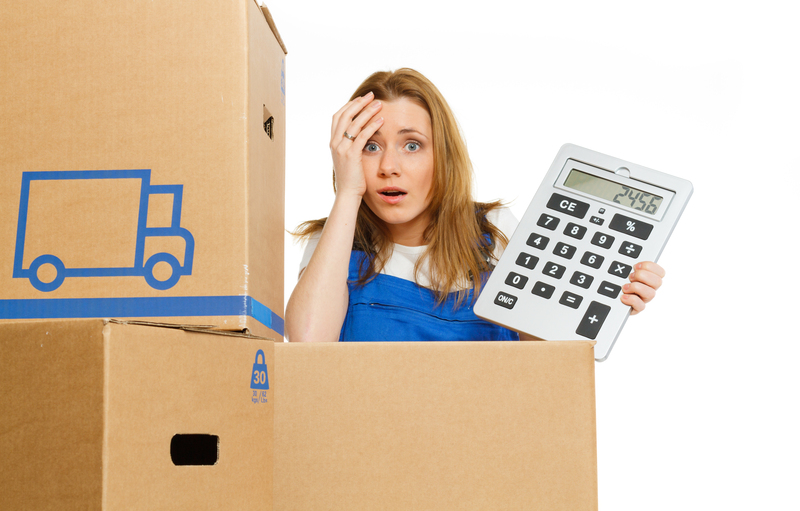Guide to Safely Moving Your Bed and Mattress
Posted on 23/06/2025
Guide to Safely Moving Your Bed and Mattress
Moving is an exciting next chapter in life, but it involves a lot of planning and logistics--especially when you need to move large furniture items like your bed and mattress. Ensuring your bed and mattress arrive at your new home safe and intact is crucial for starting off on a comfortable note. In this comprehensive guide, we will detail the step-by-step process for safely moving your bed and mattress, share practical tips, and provide expert advice for a seamless experience. Whether you're relocating across town or embarking on a cross-country move, this article is your go-to resource for hassle-free furniture moving.

Why Moving Your Bed and Mattress Requires Special Attention
Your bed and mattress are not only expensive investments; they're also vital to your health and comfort. Improper handling can lead to broken bed frames, permanent mattress damage, or even injury. Plus, moving these items is more challenging than other household goods due to their awkward sizes and bulkiness. Therefore, understanding the best methods for safely moving a mattress and bed frame is essential to avoid unnecessary expenses or discomfort.
Preparing to Move Your Bed and Mattress
1. Gather Necessary Packing Supplies
- Mattress bags: Specially designed to protect your mattress from dirt, moisture, and rips.
- Bubble wrap and moving blankets: To wrap bed frames, slats, and headboards.
- Packing tape: Heavy-duty tape for securing wrapping materials.
- Toolbox: Contains all tools for disassembling your bed frame, such as a screwdriver and wrench.
- Moving straps or ropes: Useful for lifting heavy parts and securing them inside a moving truck.
- Zip-lock bags: For bolts, screws, and small components--label them for easy reassembly.
2. Measure Doorways, Hallways, and Spaces
Before moving day, measure all entryways and pathways to ensure your mattress and bed frame can fit without damaging walls or doors. This is especially important for king or queen-sized beds, which can be difficult to maneuver.
3. Clean and Sanitize
Wipe down your bed frame and vacuum your mattress. This prevents dirt from transferring to your new space and allows an opportunity to inspect for mold, bed bugs, or other pests.
Disassembling Your Bed Frame for Moving
Most beds will need some disassembly before transport. Moving a bed frame safely starts with careful dismantling:
Step-by-Step Disassembly
-
Remove bedding and mattress
Strip all sheets, pillows, and blankets. Set them aside in separate, labeled boxes or bags. -
Detach the mattress
With help, lift the mattress off the frame and slide it into a protective mattress bag. -
Unscrew headboard and footboard
Use the appropriate screwdriver or wrench. Keep screws and hardware organized in zip-lock bags. -
Disassemble side rails and slats
Group similar pieces together, labeling them for convenience.
Tip: Take photos of each stage of disassembly. These will be a helpful reference when reassembling your bed in your new home.
Packing and Protecting Your Mattress and Bed
How to Safely Pack a Mattress for Moving
Proper packing will ensure your mattress stays clean and undamaged:
- Use a mattress bag: Place the mattress in a high-quality bag and seal it tightly. These bags protect against dust, dirt, and moisture during the move.
- Keep upright: Move the mattress standing up to prevent sagging or deformation, especially for innerspring and memory foam types.
- Handle with care: Avoid folding or sharply bending the mattress, which can compromise its structure.
- Cushion during transit: If possible, pad the mattress's surroundings inside the truck using blankets.
Never strap mattresses to the roof of a car. This is unsafe and may void warranties or cause irreparable damage.
Packing the Bed Frame and Accessories
- Wrap all wooden or metal parts with moving blankets and bubble wrap to protect against scratches and dents.
- Bundle and label slats or rails. Tie them together to prevent shifting.
- Store all hardware (nuts, bolts, screws) in a clearly labeled bag, keeping it with the frame if possible.
Lifting, Loading, and Transporting
Using Proper Lifting Techniques
Moving heavy or cumbersome items can lead to injury without correct technique. Best practices include:
- Lift with your legs, not your back.
- Wear work gloves for grip and to protect your hands.
- Get help! Beds and mattresses are usually too big and heavy for one person.
Consider employing a moving dolly or hand truck for added safety and efficiency.
Loading the Mattress and Bed Frame into the Truck
- Place the mattress on its side against the wall of the truck to save space and prevent bending.
- Load heavier parts, like the bed frame, before lighter items to stabilize the load.
- Strap down all components securely to avoid shifting and damage in transit.
Pro tip: Avoid stacking heavy items on top of the mattress, which can deform or damage it.
Unloading and Reassembling at Your New Home
Once you've arrived, take the following steps for a smooth move-in:
Unload with Care
- Double-check that the pathway to the bedroom is clear of obstacles or tripping hazards.
- Use proper lifting techniques when moving the bed and mattress indoors.
- Unpack your mattress only when it's in the room to prevent tears or dirt collection.
Reassembling Your Bed
- Refer to photos taken during disassembly for guidance.
- Lay out all hardware and frame pieces in an organized fashion.
- Attach rails, slats, headboard, and footboard in the reverse order of how you took them apart. Make sure all bolts are tightened, but avoid overtightening.
- Place the mattress back on the frame, ensuring it sits evenly and securely.
Take this opportunity to inspect for any damage before assembly; report significant issues to your moving company if they occurred during transit.
Frequently Asked Questions: Mattress and Bed Moving
Should I Hire Professionals or Move the Bed and Mattress Myself?
Professional movers offer experience, speed, and insurance coverage, making them ideal for those who prefer a hands-off approach or have valuable furniture. However, moving your bed and mattress yourself can save money, provided you have help and the right equipment. Weigh your budget, schedule, and physical ability before choosing.
Is It Safe to Fold a Mattress for Moving?
Most mattresses, especially innerspring and memory foam, should not be folded. Doing so can cause internal damage, lumps, or compromised support. Only mattresses labeled as "foldable" by the manufacturer should be bent, and only to the recommended level.
How Do I Clean My Mattress Before and After Moving?
- Before moving: Vacuum the surface and deodorize with baking soda. Spot-clean stains with mild soap.
- After moving: Air out the mattress in a well-ventilated room, and re-vacuum if needed.
What Is a Mattress Bag and Is It Necessary?
A mattress bag is a durable, plastic cover designed specifically to encase your bed for moving or storage. It provides protection against dust, moisture, bugs, and rips. Although not strictly required, it's highly recommended for safely moving a mattress.
Essential Tips for Safely Moving Your Bed and Mattress
- Label all bed parts and hardware for easy reassembly.
- Move mattresses upright and avoid sharp corners.
- Enlist help from friends or professionals, especially for king-size or heavy beds.
- Protect floors and walls with blankets during the move to avoid scuffs or dents.
- Choose the right transportation: Rent a truck or van that allows your mattress to stand up and be secured.

When to Consider Donating or Replacing Your Mattress
Sometimes, the effort to move an old, worn-out mattress isn't worth it. If your mattress is over 8 years old, sags, or causes discomfort, you might be better off donating or responsibly disposing of it before your move and investing in a new one.
Many charitable organizations accept gently used mattresses, but check for local health regulations first.
Conclusion: Stress-Free Bed and Mattress Moving
Moving your bed and mattress safely doesn't have to be a stressful ordeal. By preparing ahead, gathering the right tools, and following careful packing and moving techniques, you'll arrive at your new home ready for a good night's sleep. Remember to label and protect every part, enlist help for heavy lifting, and invest in mattress protection to ensure your sleep sanctuary remains clean and undamaged. Taking the time to move your bed and mattress safely is an investment in your comfort and well-being long after the move is complete.
We hope this comprehensive guide has empowered you to confidently tackle the challenge of moving your most important piece of furniture. For more tips and resources on moving and home care, browse our other expert articles!



